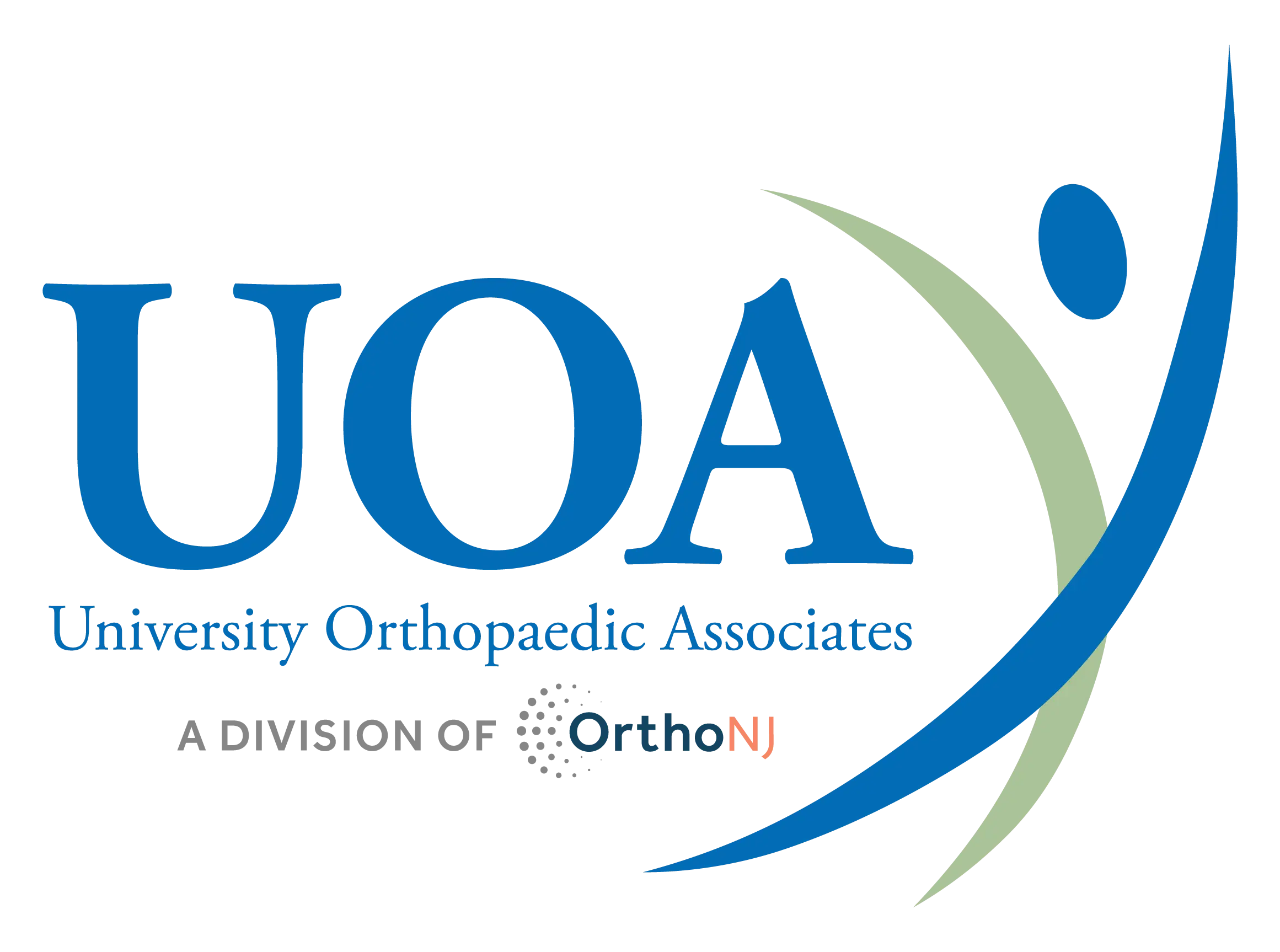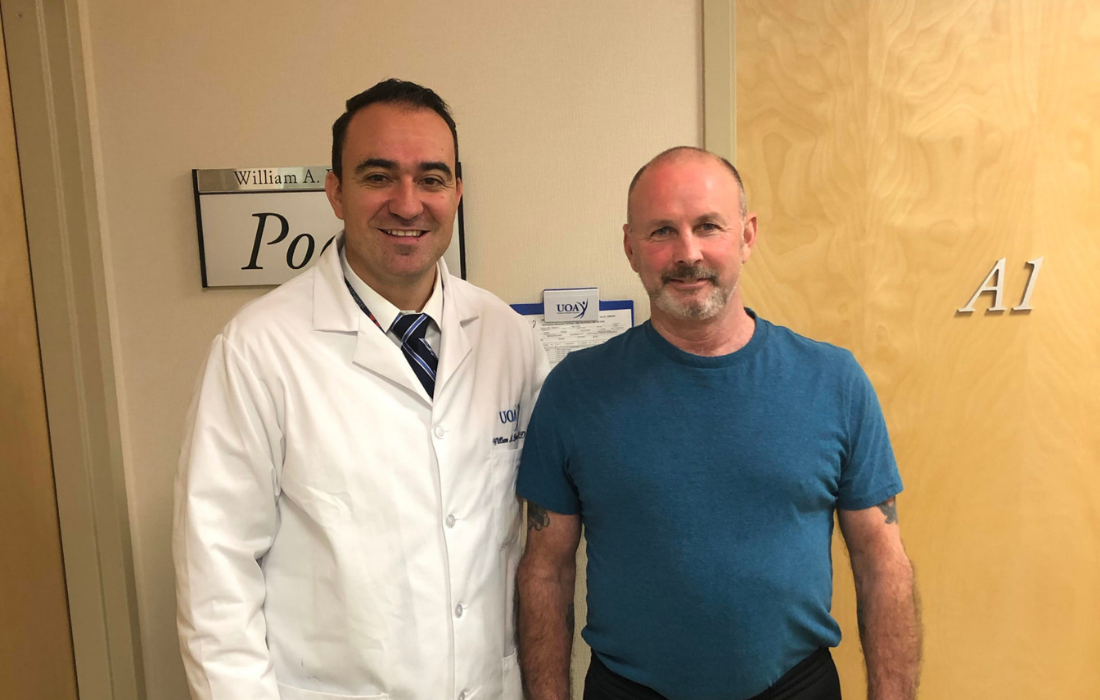One of the great recent advances—Minimally Invasive Anterior Hip Replacement—is currently available at UOA.
Nearly 500,000 total hip replacement surgeries are performed each year in the United States, 65 percent of them on people over the age of 65, according to the American Academy of Orthopaedic Surgeons. Conditions causing severe pain such as arthritis, have lead to younger patients needing hip replacement.
Minimally invasive anterior approach total hip replacement has rapidly grown in popularity because of its advantages for patients. This procedure allows the surgeon to approach the hip from the front, rather than the side or the back, and uses a muscle-splitting or muscle-sparing approach, which means exposing and replacing the hip through a natural interval between muscles, as opposed to cutting and reattaching them. The rehabilitation is easier and accelerated. Patients can expect a shorter hospital stay and faster recovery.
This incision is about 3 to 4 inches long but may be longer depending on the patient’s body size. More important than the size of the incision is the decreased trauma to the soft tissues underneath. While a very small incision may be attractive to patients, it can unduly cause tension and force on the tissues underneath during the surgery. The muscle preservation of anterior hip replacement is what truly makes this procedure minimally invasive. In addition, because the patient lies on their back during the operation, the surgeon uses live intraoperative x-rays to ensure proper positioning of the hip replacement and to accurately restore the leg lengths.
The risk of dislocation is also significantly decreased with this approach. Conventional hip surgery typically requires that most patients must follow strict precautions for 6 to 8 weeks following surgery. They must not flex the hip more than 90 degrees, which can be limiting in terms of doing normal activities, such as sitting, bending or getting in or out of a car. Climbing stairs may also be difficult during recovery. With anterior hip replacement, patients are instructed to bend their hip freely immediately following surgery and use their hip without such strict limitations. It facilitates quicker return to normal function and activities.
All prospective hip replacement patients need a thorough evaluation with their orthopaedic surgeon to determine if they are candidates for this procedure.




